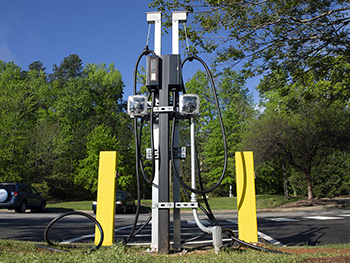Over the past five years, over 1,600 people were killed in crashes involving young drivers in the time period between Memorial Day and Labor Day. AAA refers to this as the “100 Deadliest Days”.
16 and 17-year-olds are already three times as likely as adults to be involved in a fatal crash. But over the 100 Deadliest Days, the number of deadly teen driver crashes increases.
“It climbs,” said Tiffany Wright, Public Relations Manager for AAA Carolinas. “In fact, it climbs 15 percent compared to the rest of the time of the year, so we talk about the 100 deadliest days when we’re talking specifically about teens and this is the period historically when teen deaths and teen crashes rise.”
Wright said there isn’t one known reason for this heightened number of wrecks over summer. But instead, it’s a multitude of reasons, ranging from more cars being on the road to distractions in the car.
“They’re going to be distracted whether they’re messing around with the radio, they’re responding to a text, they have other teens in the car that are distracting them,” she said. “All of those can be a factor and they really do rise exponentially when we’re talking about you putting a driver behind the wheel who really doesn’t have a whole lot of experience.”
Distractions are one of the highest reasons teens are involved in crashes. According to a AAA press release, In 2016, 22 percent of teen crashes were the result of distracted driving.
Wright said much of this has to do with how glued many teens are to their phones, but can also have to do with the many other distractions that already come with the car.
“There are so many safety features on cars now,” she said. “You don’t even have to look to your right to change a lane because you’re getting a little indicator in your mirror. All these things lead to drivers being overconfident and just kind of relying on technology to do the driving, to do the work.”
Other factors that commonly result in teen crashes are unbuckled seat belts and speeding. Wright said AAA encourages families and friends to teach teens to drive by example, and sit down with them and discuss safe driving habits.
“So they’ve seen mom and dad behind the wheel multitasking: eating, answering an email, doing all these things behind the wheel and once it’s time for them to get behind the wheel, they think that’s okay so it starts with parents being able to teach their teens by being a good example behind the wheel,” she said.
Wright said fatal teen crashes are on the rise, and that all teens should understand that poor driving habits can have fatal consequences.
“Hopefully someday we won’t be talking about the 100 Deadliest Days,” she said. “We’d like to stop saying that. Every Memorial Day through Labor Day, we’d like to stop. Not saying so being as such a commonplace, but unfortunately, it’s only continued to rise.”
Click here for more information and statistics on the 100 Deadliest Days.
Click here for resources and tools to help parents and teens prepare for the summer driving season.



